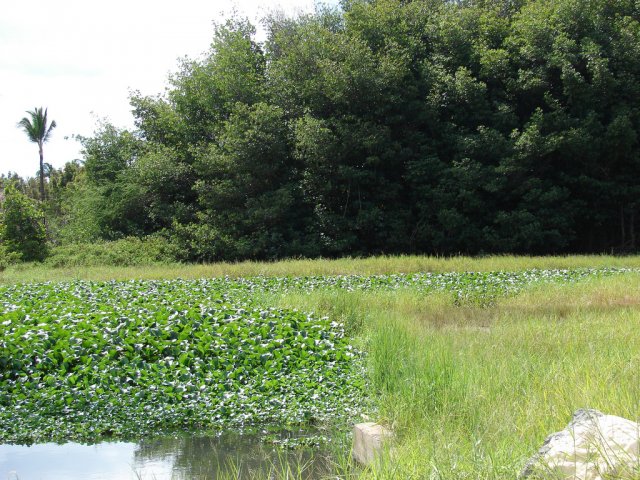Indicators: Nitrogen
What is nitrogen?
Nitrogen, like phosphorus, is a critical nutrient required for all life. The most common forms of nitrogen used by biological organisms include ammonia, nitrates, and nitrites. Nitrogen is an essential component of cell amino acids, proteins, and DNA. These forms of nitrogen occur naturally in the environment at various points of the nitrogen cycle. Nitrogen is a common ingredient in commercial fertilizers.

Why is it important to evaluate nitrogen?
Nitrogen is a contributor to freshwater, coastal, and estuarine algal blooms. Increased nitrogen inputs can stimulate excess growth of algae, which leads to low dissolved oxygen levels, potential for harmful algal toxins, blockage of sunlight needed by organisms and plants in the water and degraded habitat conditions for benthic macroinvertebrates and other aquatic life. Sources of excess nitrogen to rivers and streams, lakes and coastal waters include fertilizers, waste water, animal wastes and atmospheric deposition.
What can nitrogen tell us about the condition of water?
In appropriate quantities, nitrogen supports the growth of algae and aquatic plants. Increased nitrogen inputs to a waterbody can stimulate excessive growth of algae and aquatic plants, thereby creating eutrophic conditions that interfere with recreation and the health and diversity of vegetation, insects, fish and other aquatic organisms. Over time, animal and plant species composition may shift as native species decline and are replaced by species that take advantage of high nutrient levels. This change in community composition can cause declines in ecological condition and alter the functions that the waterbody provides to the environment.
How is this indicator used in NARS?
Four surveys collect nitrogen data which is available on the NARS data page. Below the table you access assessment information in current reports.
| NLA | NRSA | NCCA | NWCA | Indicator Type |
|---|---|---|---|---|
| X | X | X | X | Core Indicator |
| Research Indicator |
National Lakes Assessment Web Report- Nitrogen Results
National Rivers and Streams Assessment Web Report- Nitrogen Results
National Coastal Condition Assessment Web Report- results coming soon
National Wetland Condition Assessment Web Report - Nitrogen Results
